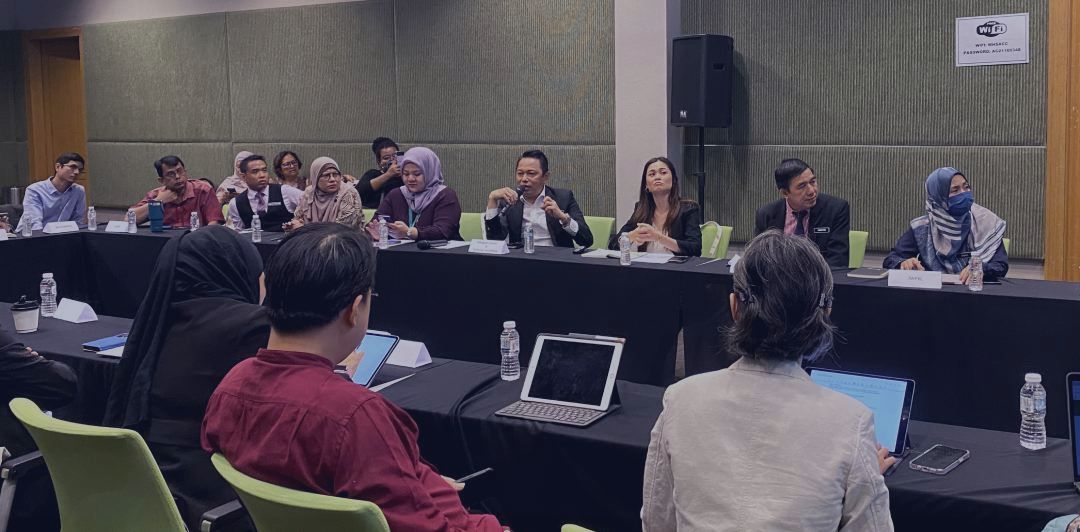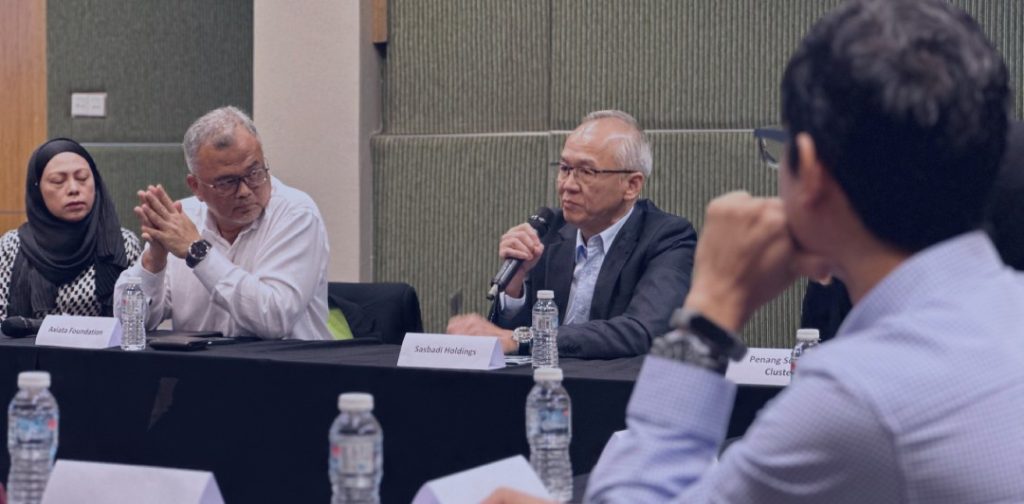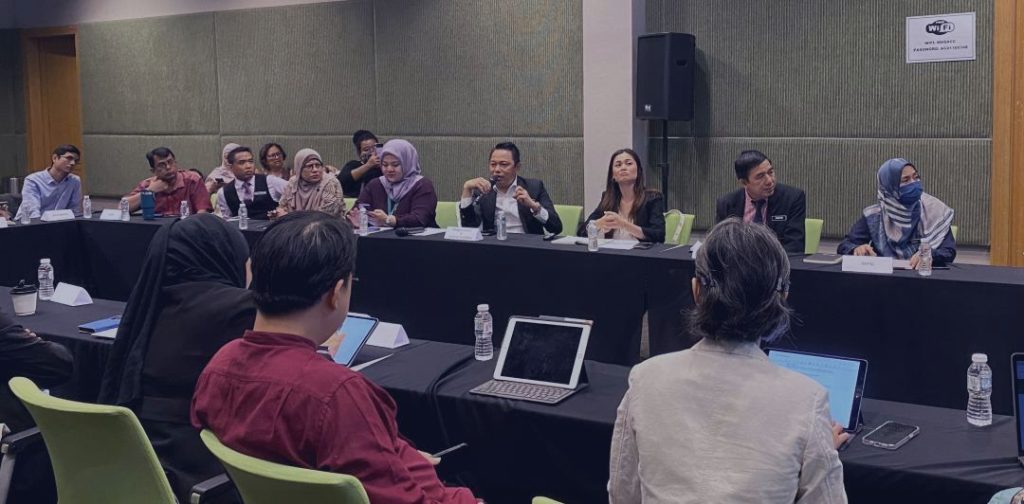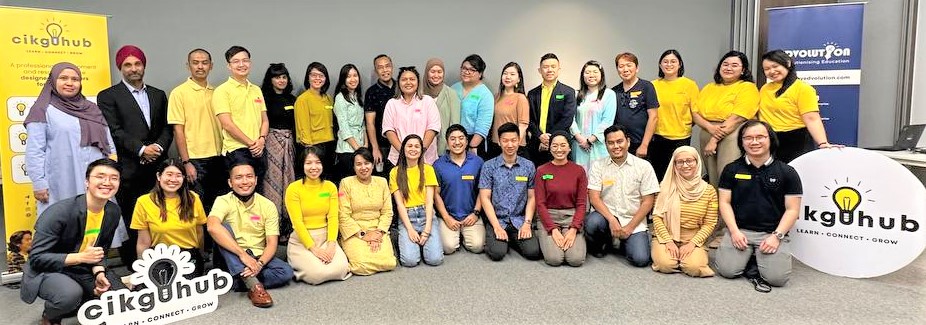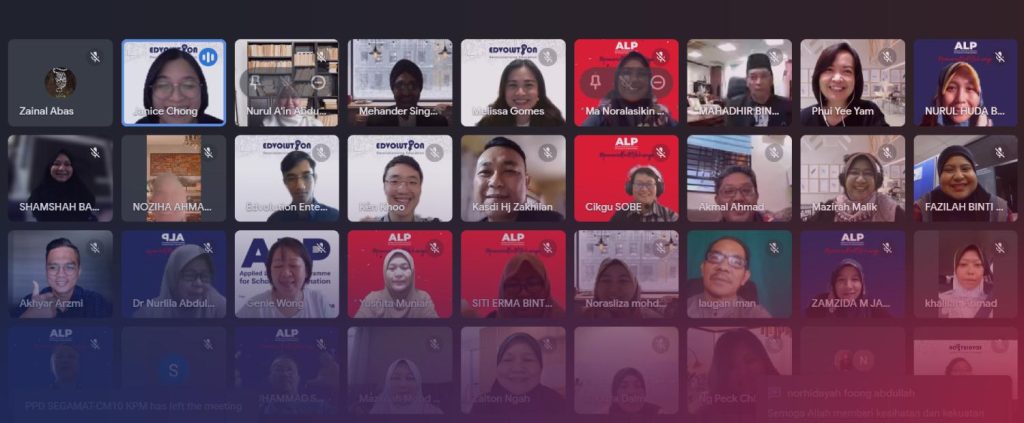According to the Future of Jobs Report 2023 by the World Economic Forum, which brought together perspectives from 803 companies collectively employing more than 11.3 million workers across 27 industry clusters and 45 economies, over 85% of companies surveyed identify increased adoption of new and frontier technologies and broadening digital access as the trends most likely to drive transformation in their organisation.
To ensure Malaysia moves in tandem with the above findings, the National Digital Education Policy was launched on 28 November 2023 to ensure digital fluency among teachers and students. Education Minister Fadhlina Sidek said that to ensure the policy’s success, the Education Ministry is now focusing on improving infrastructure and streamlining the digital ecosystem in schools.
In conjunction with the launch of the national policy, Edvolution and Hap Seng organised a specially curated roundtable that brought together nearly 30 leaders from tech, EdTech (education technology), corporate social responsibility, education providers and government sectors in Malaysia to discuss the recently presented and cabinet-approved National Digital Education Policy in Malaysia, particularly its aspirations for our education system. From the discussions, a few key potential challenges were identified in implementing this policy:
Challenge #1: Teacher Competencies
During the pandemic, the Ministry of Education (MOE) evaluated teachers’ digital competencies and found that among in-service teachers:
- 22% are at the “basic” level
- 76% are at the “intermediate” level
- 2% are at the “advanced” level
The MOE aims to increase the digital competency levels of teachers with a focus on developing them to be technologically savvy to incorporate more digital tools in day-to-day lessons with students. Principals and school leaders are also targeted for further upskilling to support teachers in incorporating technology in schools.
Challenge #2: Data and Devices
Another main challenge the MOE seeks to address is the lack of devices and connectivity in schools. While all 10,231 schools are connected either through 4G, fibre, or satellite, the issue is that only certain parts, such as computer labs, school office, and the library, are connected. In some schools, connectivity is still lacking in some classrooms.
The lack of devices is a barrier, particularly in lower-income households, where multiple students may need to share a device. This results in disruption in learning for students when the device is in use by another person. The MOE’s aspiration is for learning to be accessible anytime and anywhere, not just within school facilities and requested the help of partners to assist in this matter.
Challenge #3: Continuous Improvement of DELIMa
DELIMa, the MOE’s digital education platform, is an example of “infrastructure, info-structure and content” that the MOE is continuing to develop. Some features of DELIMa include the following:
- Students can access digital textbooks, submit assignments, and receive graded homework from their teachers, fully digitally.
- Aritificial Intelligence (AI) solutions for teachers and students developed by partners such as Google, Apple, Microsoft, and Intel.
- Teachers can upskill themselves via online courses from the International Society for Technology in Education (ISTE).
- Students can access over 12,000 videos created with DidikTV and Media Prima, in addition to content created by “Guru Cemerlang”.
Through the National Digital Education Policy, the MOE is also looking to improve personalised and self-paced learning for students, which takes into account the different learning styles and pace of learning of students. One focus area is on using AI to develop literacy and numeracy solutions that are adaptive and responsive to students’ learning needs.
Challenge #4: Increasing Usage and Adoption of DELIMa
One of the current focuses in the MOE is to expand the use of AI in education, a topic also highlighted in the 2023 World Economic Forum report. There is also a focus on gamification to aid learning and initiatives to help students be secure and safe on the internet.
Since its establishment in 2019, DELIMa has grown rapidly as an online learning platform, now offering a wide range of interactive content for students to access virtually, including integrations with the National Archive, National Library, and a range of AI tools for teachers and students. Yet, one of DELIMa’s major challenges remains driving greater adoption and usage of the tools available on its platform. While 86% of teachers are active users of DELIMa, only 36% of students are found to be active users — with data and devices as the main factor contributing to the low usage by students.
Besides that, a concern was raised that most content is cloud-based, which requires a lot of guidance from teachers. This raises a potential barrier of requiring teachers’ buy-in to use DELIMa effectively in their classrooms.
One of the measures currently being undertaken by Bahagian Sumber dan Teknologi Pendidikan (BSTP) besides ensuring that DELIMa is fully running and operational as an online learning platform is to follow up with state and district-level leaders to drive higher adoption of DELIMa in schools.
This is Part 1 of a series about the National Digital Education Policy. Read part 2 on the opportunities for third party players here.
Source: Leading The Way In Stem Excellence: A Dialogue with Social-Impact Investors and Impact Makers. Organised by Hap Seng Consolidated Berhad and Edvolution Enterprise, 28 November 2023.

